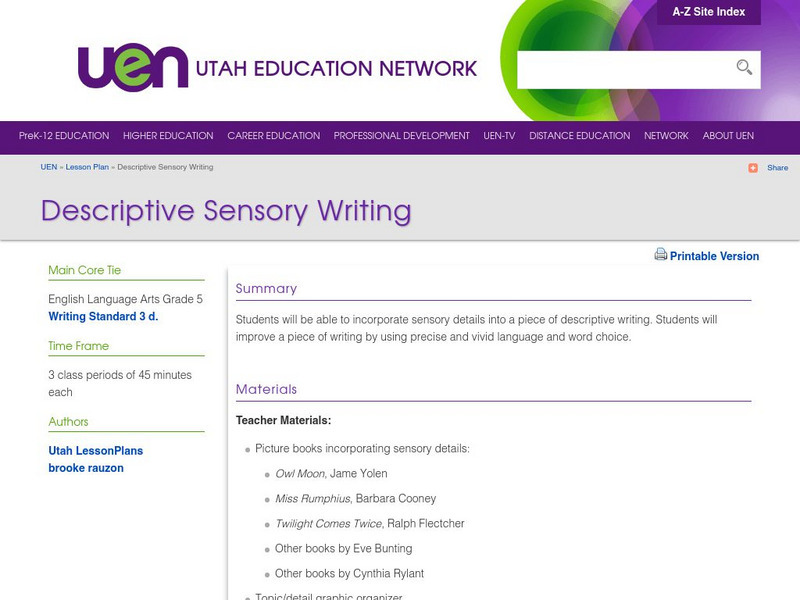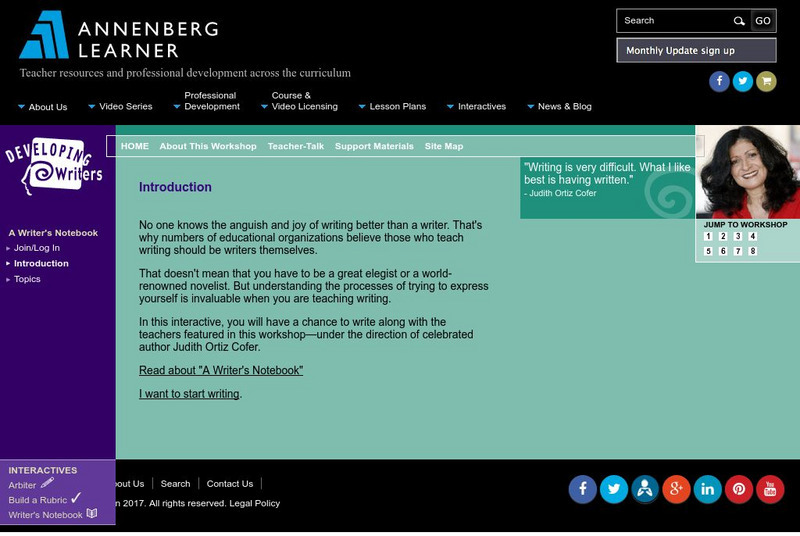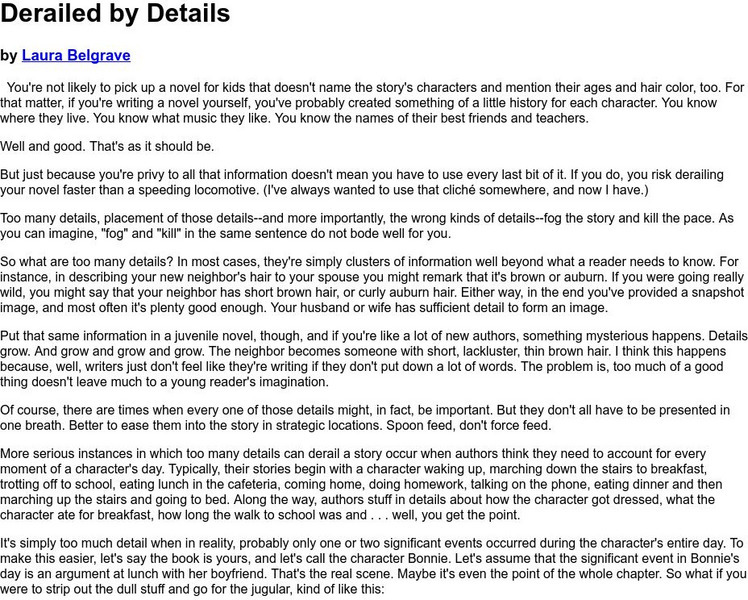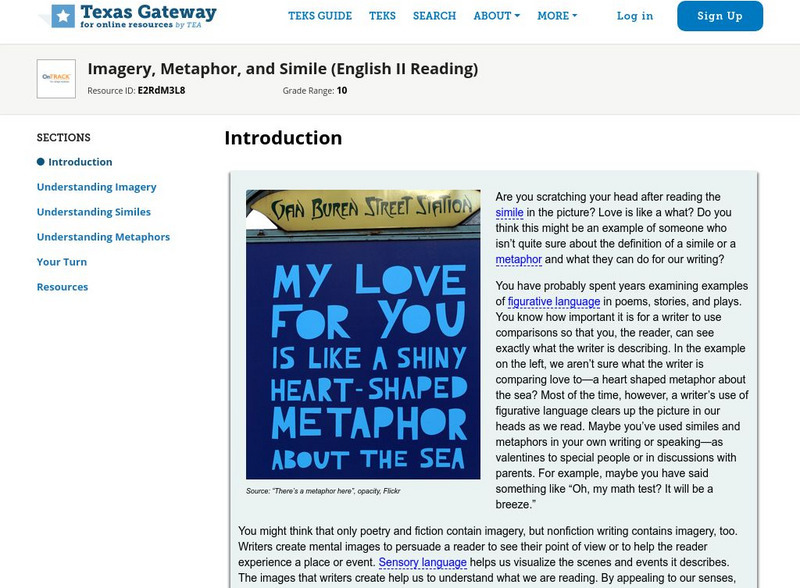Hi, what do you want to do?
CPALMS
Cpalms: Reading With Our Eyes, Fingers, Toes, Ears and Nose
[Free Registration/Login Required] In this lesson, students are learning to identify sensory words in their reading, specifically in poetry. Students will gain a perspective on how authors use sensory words to portray their ideas. They...
Utah Education Network
Uen: Descriptive Sensory Writing
In this lesson, 5th graders will engage in descriptive writing. Students will improve a piece of writing by using precise word choices that are full of sensory word choices.
Annenberg Foundation
Annenberg Learner: A Writers' Notebook
Virtually participate in a workshop of four high school teachers led by a renowned author. There are eight topics including "Hiding and Revealing with Language," "Using Sensory Description," and "Writing a Picture of Me".
Harold D. Underdown
Derailed by Details
A helpful site for writers which gives the proper perspective in assessing the detail involved in your writing. Provides examples of how to include exciting, relevant details when writing fiction.
Texas Education Agency
Texas Gateway: Literary Text: Imagery, Metaphor, and Simile
Writers use sensory imagery ("smelled the salty air"), similes ("like a strong man playing tug-of-war"), and metaphors ("the waves roaring in my ears") to capture the reader's imagination. In this lesson, you will learn how to identify...









